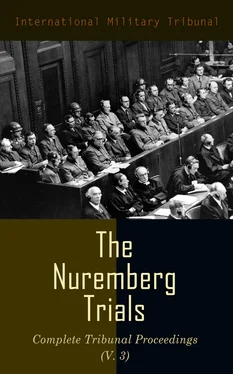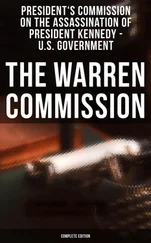“5. Missions for the branches of the Armed Forces.
“a. Army. The basic principle of the surprise attack against Czechoslovakia must not be endangered nor the initiative of the Air Force be wasted by the inevitable time required for transporting the bulk of the field forces by rail. Therefore it is first of all essential to the Army that as many assault columns as possible be employed at the same time as the surprise attack by the Air Force. These assault columns—the composition of each, according to their tasks at that time—must be formed with troops which can be employed rapidly owing to their proximity to the frontier or to motorization and to special measures of readiness. It must be the purpose of these thrusts to break into the Czechoslovakian fortification lines at numerous points and in a strategically favorable direction, to achieve a break-through, or to break them down from the rear. For the success of this operation, co-operation with the Sudeten-German frontier population, with deserters from the Czechoslovakian Army, with parachutists or airborne troops and with units of the sabotage service will be of importance. The bulk of the army has the task of frustrating the Czechoslovakian plan of defense, of preventing the Czechoslovakian army from escaping . . .”
THE PRESIDENT: Is it necessary to read all this detail?
MR. ALDERMAN: I was just worried about not getting it into the transcript.
THE PRESIDENT: It seems to me that this is all detail, that before you pass from the document you ought to read the document on Page 15, which introduces it and which gives the date of it.
MR. ALDERMAN: I think so. It is a letter dated:
“Berlin, 30 May 1938; copy of the fourth copy; Supreme Commander of the Armed Forces; most secret; access only through officer; written by an officer. Signed Keitel; distributed to C-in-C Army, C-in-C Navy, C-in-C Air Force.
“By order of the Supreme Commander of the Armed Forces, Part 2, Section II, of the directive on the unified preparations for war of the Armed Forces dated 24 June 1937, (Ob. d. W)”—with some symbols, including “Chefsache” (top secret)—“(two-front war with main effort on the Southeast—strategic concentration Green) is to be replaced by the attached version. Its execution must be assured as from 1 October 1938 at the latest. Alterations in other parts of the directives must be expected during the next week.
“By order of Chief of the Supreme Command of the Armed Forces, signed, Keitel.
“Certified a true copy, Zeitzler, Oberstleutnant on the General Staff.”
In line with the suggestion of the presiding Justice, I shall omit the detailed instructions which are set out for action by the Luftwaffe and by the Navy, and I turn next to the last paragraph of the directive, which will be found on Page 19 of the English version:
“In war economy it is essential that in the field of the armament industry a maximum deployment of forces is made possible through increased supplies. In the course of operations, it is of value to contribute to the reinforcement of the total war—economic strength—by rapidly reconnoitering and restarting important factories. For this reason the sparing of Czechoslovakian industrial and factory installations, insofar as military operations permit, can be of decisive importance to us.”
In other words, the Nazi conspirators, 4 months before the date of their planned attack, were already looking forward to the contribution which the Czech industrial plant would make to further Nazi war efforts and economy.
And the final paragraph of this directive, Paragraph 7, on Page 19:
“All preparations for sabotage and insurrection will be made by OKW. They will be made, in agreement with, and according to, the requirement of the branches of the Armed Forces, so that their effects accord with the operations of the Army and Air Force as to time and locality.
“Signed Adolf Hitler.
“Certified a true copy, Zeitzler, Oberstleutnant on the General Staff.”
Three weeks later, on 18 June 1938, a draft for a new directive was prepared and initialed by the Defendant Keitel. This is Item 14 at Pages 27 to 32 of the Big Schmundt file. It did not supersede the 30 May directive. I shall read the third and fifth paragraphs on Page 28 of the English translation, and the last paragraph on Page 29:
“The immediate aim is a solution of the Czech problem by my own free decision; this stands in the foreground of my political intentions. I am determined as from 1 October 1938 to use to the full every favorable political opportunity to realize this aim.”
Then skipping a paragraph:
“However, I will decide to take action against Czechoslovakia only if I am firmly convinced, as in the case of the occupation of the demilitarized zone and the entry into Austria, that France will not march and therefore England will not intervene.”
And then skipping to the last paragraph on the 29th page:
“The directives necessary for the prosecution of the war itself will be issued by me from time to time.”
“K”—initial of Keitel, and—“Z”—initial of Zeitzler.
The second and third parts of this directive contain general directions for the deployment of troops and for precautionary measures in view of the possibility that during the execution of the Fall Grün (or Case Green) France or England might declare war on Germany. Six pages of complicated schedules which follow this draft in the original have not been translated into English. These schedules, which constitute Item 15 in the Schmundt file, give a timetable of specific measures for the preparation of the Army, Navy, and Luftwaffe for the contemplated action.
Corroboration for the documents in the Schmundt file is found in General Jodl’s diary, our Document Number 1780-PS and United States Exhibit Number 72, from which I quoted portions during the Austrian presentation. I now quote from three entries in this diary written in the spring of 1938. Although the first entry is not dated it appears to have been written several months after the annexation of Austria, and here I read under the heading on Page 3 of the English translation:
“Later undated entry:
“After annexation of Austria the Führer mentions that there is no hurry to solve the Czech question, because Austria had to be digested first. Nevertheless, preparations for Case Green will have to be carried out energetically. They will have to be newly prepared on the basis of the changed strategic position because of the annexation of Austria. State of preparation, see Memorandum L-1-A of 19 April, reported to the Führer on 21 April.
“The intention of the Führer not to touch the Czech problem as yet will be changed because of the Czech strategic troop concentration of 21 May, which occurs without any German threat and without the slightest cause for it. Because of Germany’s self-restraint the consequences lead to a loss of prestige for the Führer, which he is not willing to take once more. Therefore, the new order is issued for Green on 30 May.”
And then the entry, 23 May:
“Major Schmundt reports ideas of the Führer. . . . Further conferences, which gradually reveal the exact intentions of the Führer, take place with the Chief of the Armed Forces High Command (OKW) on 28 May, 3 and 9 June,—see inclosures (War Diary).”
Then the entry of 30 May:
“The Führer signs directive Green, where he states his final decision to destroy Czechoslovakia soon and thereby initiates military preparation all along the line. The previous intentions of the Army must be changed considerably in the direction of an immediate break-through into Czechoslovakia right on D-Day”—X-Tag—“combined with aerial penetration by the Air Force.
“Further details are derived from directive for strategic concentration of the Army. The whole contrast becomes acute once more between the Führer’s intuition that we must do it this year, and the opinion of the Army that we cannot do it as yet, as most certainly the Western Powers will interfere and we are not as yet equal to them.”
Читать дальше












